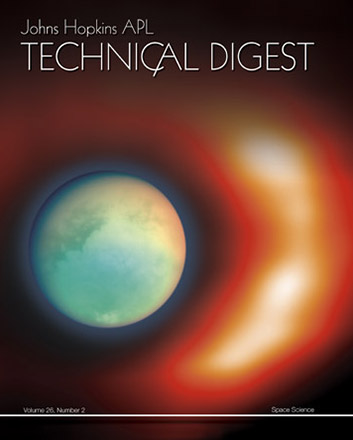
Space Science
Volume 26, Number 2 (2005)
Saturn’s moon, Titan, is embedded in the violent ≈150-km/s flow of plasma orbiting around Saturn. The Ion and Neutral Camera (INCA) onboard the Cassini spacecraft relies on a new technique of imaging space plasma using energetic neutral atoms. INCA was built by the Space Physics Group at APL and obtained this first-ever image (red glow) of the interaction between the plasma flow and Titan’s upper atmosphere. The image of Titan is taken in UV and IR wavelengths and shows surface features and atmospheric methane concentration (green to red) as well as the layers of haze of hydrocarbons (blue) extending to high altitudes. (Image from NASA/JPL/Space Science Institute.) Solar research at APL aims to understand the physics that govern solar activity and its effects on solar system bodies. The back-cover image shows two eruptive solar prominences captured by the Extreme Ultraviolet Imaging Telescope (EIT) onboard the Solar and Heliospheric Observatory (SoHO). In a matter of hours, these two prominences erupted away from the Sun, resulting in two coronal mass ejections.